Pictured: Citrus 101 workshop participants with Capri Williams (center) Credit: Joanna Glovinsky
Joanna Glovinsky is the founder of local fruit tree education and service provider Fruitstitute. Capri Williams is a horticulturist and expert fruit tree educator. Arlington Garden partnered with Fruitstitute in the summer of 2021 to offer workshops (“Citrus 101”) in our orange grove. The following interview has been edited for clarity and length.
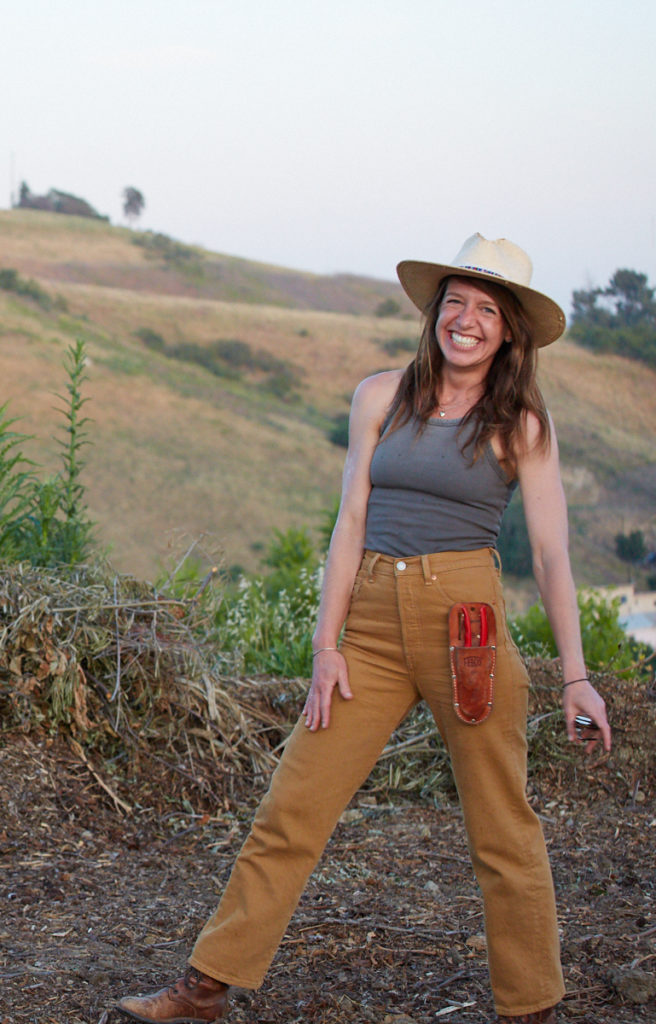 AG: Could you tell us a little bit about how you became interested in the noble profession of horticulture? What experiences led you to start Fruitstitute, Joanna?
AG: Could you tell us a little bit about how you became interested in the noble profession of horticulture? What experiences led you to start Fruitstitute, Joanna?
Joanna Glovinsky: Before I lived in Los Angeles, I was living in Guatemala in an agrarian society. That’s when my food changed, my body changed, everything changed. That’s also where I got into food and learned about food systems.
I got into graduate school here at USC, and my biggest concern about moving back to the States was ‘what am I gonna eat?’ So I’m in school for communications getting my Masters in like, propaganda essentially, but uh….
AG: Just your usual skill!
JG: Yeah! I mean, I always say I got my Master’s in communications and came out a gardener. But that’s pretty much what happened! When I was in grad school, I started working for Ron Finley, and that’s how I got into the world of urban agriculture.
I graduated from school and had my “dream job” [lined up at a think tank], and I was like… “Yeah, I’d rather be shoveling shit!” And that was when I realized that I needed to pursue horticultural work. I volunteered at Huntington Ranch, which is where I took my first class in fruit tree pruning, and I realized: oh, I get fruit tree pruning … I was born to prune!
From there I started working for Fallen Fruit. And that is how [eventually] I ended up founding Fruitstitute.
AG: Was there something that happened in grad school that caused you to see “shoveling shit” as a noble pursuit?
JG: I think that calling it a “noble pursuit” started when I was younger. I’m the daughter of a United Nations employee, so we lived all over the world. From a really young age, I was fascinated by and passionate about Indigenous cultures and Indigenous people, and I had already started asking: Why have native peoples been so undervalued, when it seems that their cultures are so rich and hold the answers that we need right now?
When living in Guatemala, in this agrarian society, my neighbors were Mayan. Living among this contemporary indigenous culture and being integrated into their foodways maintained the interest that I already had in native peoples’ knowledge. We don’t need to reinvent the wheel. “Shoveling shit” is a very worthy noble profession, and it’s what people have been doing forever, and we need to understand and see it as such.
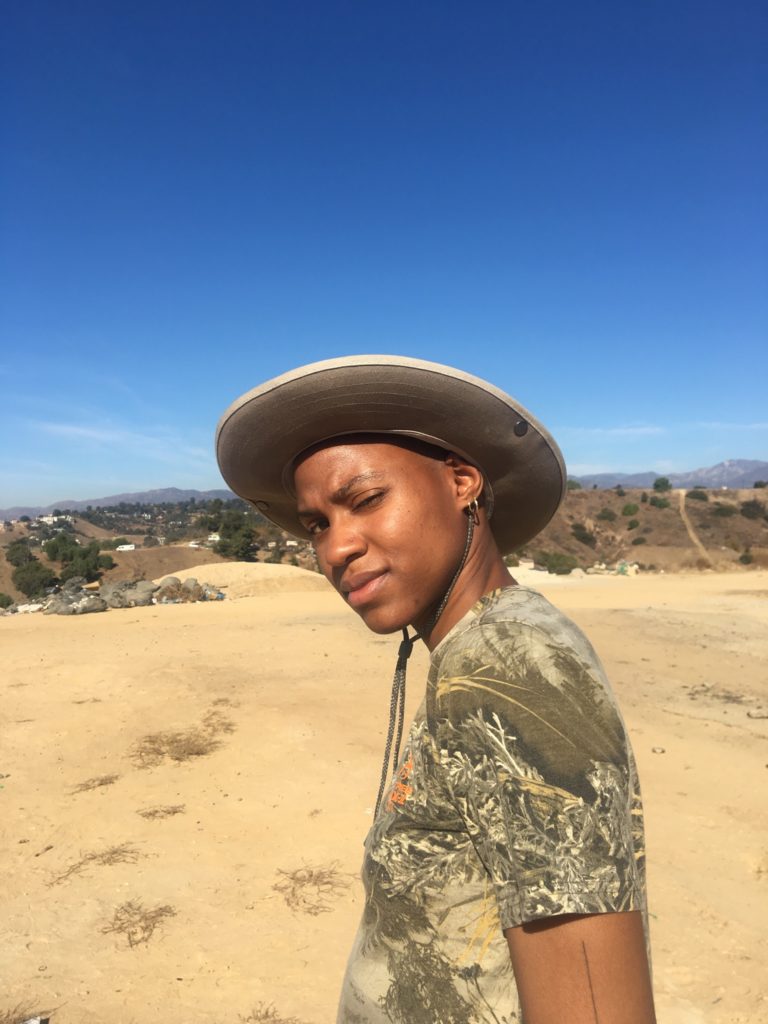 AG: How did you become involved with Fruitstitute, Capri?
AG: How did you become involved with Fruitstitute, Capri?
Capri Williams: I like to think of my interest in horticulture as more of an act of remembering. My ancestors freely grew their own food in West Africa. It wasn’t until they were stolen and enslaved in America that I and they “forgot”. I keep this in mind when tending to the land. When my work with the land becomes intuitive, it is at that moment that I am remembering an action that my grandparent many generations down performed. My great grandparents were sharecroppers in Mississippi. My mom tells me of picking wild kale and mustard greens as a child. I dream of a near future where I co-own land with friends, and we prioritize the harm-reductive farming methods used by our ancestors.
My introduction to Fruitstitute was serendipitous. When I relocated to LA from New York, I nannied for a cute queer family who had a beautiful backyard orchard maintained Fruitstitute. I was obsessed with their backyard! They had guavas, mangoes, apples, mulberries, you name it! When they learned of my agricultural interests, they suggested I look into getting involved with Fruitstitute. When I was ready to make the transition, the family wrote me a truly endearing letter of recommendation. The rest is history!
AG: Joanna, you mentioned Fallen Fruit a little earlier. Can you tell us a little bit about what it is and any connection between Fallen Fruit and Fruitstitute?
JG: Fallen Fruit is an artist collaborative between David Burns and Austin Young using fruit as their medium. When they launched the project ‘The Endless Orchard’ at LA State Historic Park, they created the Monument to Sharing, which consisted of 32 mandarin trees in big containers. I came onboard as the Community Manager for that project.
I was essentially the boots on the ground, walking door-to-door in the neighborhood, and asking people to adopt fruit trees and be part of the Monument. I also interviewed them and asked these great questions: What does sharing mean to you? Tell me a fruit memory, or if a fruit tree could talk what would it say? The interviews were transcribed and Austin and David took sentences from them and turned them into a poem on the barrels of the fruit trees in the park.
I realized that there is this huge [unmet need] for care for residential fruit trees. Unfortunately, everything that you find online [or in books] is written by commercial growers, so their rules don’t necessarily apply to us. We’ve got trees with different purposes. I learned that from going door to door and talking about fruit trees with people from all over the world: everyone’s grandma had tips and tricks and there is just so much cultural knowledge.
AG: Is there a tip or trick that you remember?
JG: My favorite was this Japanese American elder who told me that if avocados aren’t fruiting, you should stab a stake through their trunk. Similarly, there was a woman who planted an avocado tree when her grandson was born. 15 years later, it still hadn’t given fruit. She found somebody in her community who told her that avocado [trees] like to be beaten. So she goes home and she says I’ve got to beat my tree. She decides she’s going to tie it up. And, apparently, she doesn’t have anything to tie it up with except old bras. So she ties it up with bras, and a year later there are huge avocados sitting in the bra cups!
As I learned more about arboriculture, I learned that avocados that don’t fruit have a sugar transportation problem. So if you girdle the fruiting wood – which means to put cuts in the fruiting wood – it will induce fruiting! The science is there in folk knowledge.
AG: Capri, you led a series of citrus care workshops at Arlington Garden — what do you think is the most important lesson that you hope attendees learned?
CW: I hope the prevailing lessons that attendees learned were patience and practice. Patience with their plants and themselves. It is easy to approach gardening with frustration at overgrown branches or disappointment with low yields. Or maybe you feel like you can never get the irrigation regimen right. In those moments it is important to ground oneself. There are bees buzzing in your hair, the scent of citrus flowers is in the air. This is a great moment to take a step back and consider where you are and what you are doing.
As land stewards, we are providing support to autonomous beings who have been around for millennia! We should be grateful for the symbiotic relationship we have developed with them, and also be thankful for their propensity to replenish themselves. If you prune a hole in a tree, you can give the tree time to fill the hole or prune them in a way that encourages growth in that area. Practicing and spending more intentional time with your plants will help you get to know their growth habits. And if all else fails, there is a wealth of information on the internet and many knowledgeable earth workers in LA.
I also hope people retained approaching pruning somewhat conservatively. You can always take more off, but you can’t put it back on!
AG: As climate change affects the landscape around Los Angeles County, how do you think fruit tree care will change? How should home gardeners be planning differently for a future more prone to drought and extreme weather events?
CW: Fruit tree care will need to be as adaptable as climate change is inclement. More forethought and education in planting locations and microclimates is key. It is important for people to familiarize themselves with the layout of the land they are working with. For instance, if you plant a fruit tree on a hillside, the water naturally runs off. But, if you plant them at the bottom of a hillside, where the water will collect, you reduce your frequency of irrigation. Similarly, shaded areas are cooler, and will require less watering than an area that is in full sun. Knowing the ins and outs of the land will tremendously help with water conservation!
A great first step home gardeners can take in planning differently for a drought-prone future, is to be more conscious of the cultivation of non-native, inedible gardening like grass. Lawns are the number one irrigated “crop” in North America! Again, education is tantamount. If more people knew about groundcover plants, the necessity of mulch, and grouping plants together with similar irrigation needs, they would implement these changes. Lastly, while it is true that fruit trees require more water than native plants or other edible plants, it is important to also direct questions like these to golf courses, theme parks, and other institutions that use more water than any home gardener could fathom.
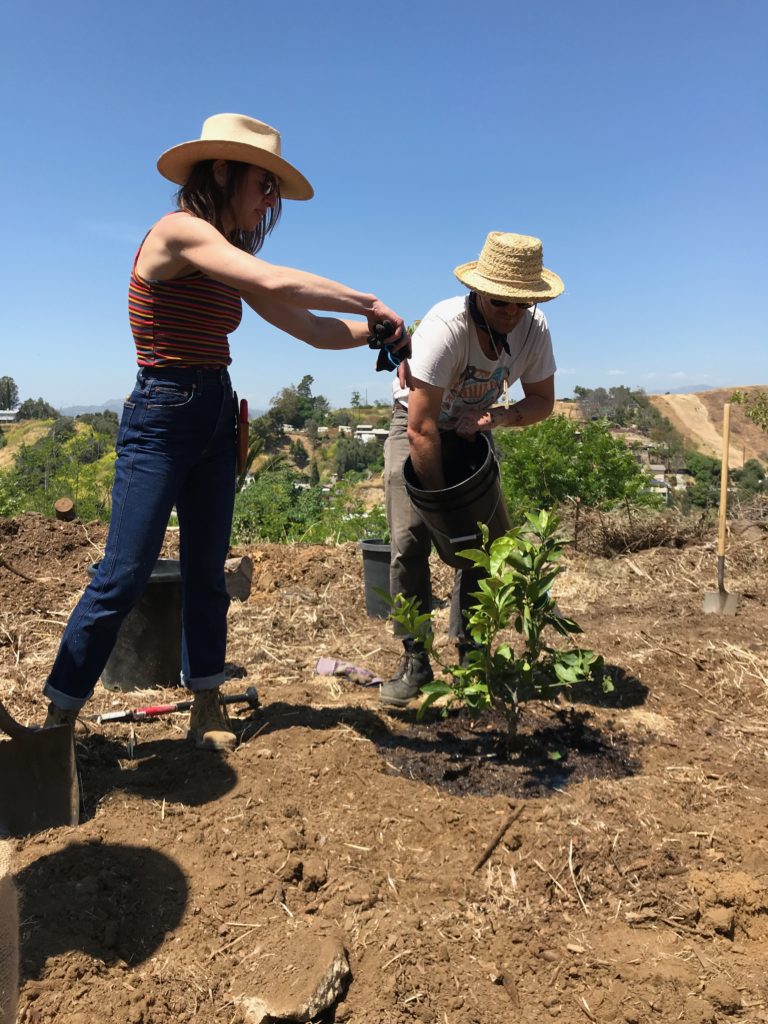 AG: Joanna, what are your thoughts about caring for fruit trees in a changing climate?
AG: Joanna, what are your thoughts about caring for fruit trees in a changing climate?
JG: People need to know their plants. That’s number one. To have a successful, ecologically sound landscape you need to know what your plants want and not – for instance – plant natives right next to fruit trees. Natives don’t need to be irrigated, but fruit trees do. Unlike natives, fruit trees need specialized care: you can’t just plant a fruit tree and leave it.
The other big thing, I think, is that we need to have a more informed approach to landscape management. People need to understand [for instance] that the more trees you have on your property, whether they are fruit trees or not, the less water your property needs. We should never see exposed soil, that makes me twitch! Exposed soil is dead. It’s void of life. It’s not holding water. Whereas if you have soil with anything in it, there is water! There is life in there that is breathing and taking carbon out of the atmosphere!
Whether you plant fruit trees or not: trees are the best form of carbon draw-down. So I think that as our climate gets hotter, and as we are forced to change with climate change, we need to start looking at our landscapes with new eyes […] if we don’t start seeing how to use our green spaces and get them healthy, then this will be a desert.
AG: This next question is of special relevance to Arlington Garden, since we attempt to do this in our own landscaping. What are ways for home gardeners to integrate fruit trees into their native focused landscaping?
JG: I think they should do what you guys [at Arlington] are doing [laughs]! If we think of any commercially cultivated variety of fruit – that’s something that’s usually been grafted like citrus, stone fruit, pomme fruit, etc. – they’re designed to be packed into orchards where they have nothing growing in their root zones. The absorbent roots that take in water and nutrients are really high [in the soil]! They’re in the top 3 inches. This means that we can’t plant in their root zone. Have your natives, but put them on the outside of the canopy drip line, which is the edge of the canopy. If you have anything growing under your fruit tree, your tree can’t compete. It’s just not designed for that.
CW: Absolutely! I have seen many iterations of fruit trees successfully integrated into a native-focused landscape. I’m no expert in native plants, but the layout of Arlington Garden is an inspiration for people who want to plant fruit trees alongside natives. Milkweed, poppies, and prickly pears can be planted in a circle or spiral outside the dripline of an apple tree.
Although, it is important to recognize natives and fruit trees have different irrigation needs. If you have your plum on the same irrigation schedule as sage, the sage will suffer, and if your plum is being watered with overhead sprinklers once a month, they will suffer. Finding a good distance between the two and a separate irrigation schedule will allow for a beautiful landscape and happy plants!
AG: Finally, is there a role for backyard gardening in helping to fight food insecurity? Is there a role for it to play in addressing other social problems?
JG: Circling back to the beginning of this conversation, I think that backyard gardening is connecting people with their soil. This [connection with the soil] is the game changer that we need, otherwise it’s “game over” with our planet. The way that I personally think we will survive on this planet, is if we understand our soil and connect with our soil. And that’s going to happen in our backyards and community spaces.
I personally feel like compost is gonna save the world and what compost means is that nothing is better than anything else. Everything [living] has a life and then goes back, dies, and creates more life. I think that was one of my huge ‘aha moments’, learning about compost. I’m like yeah, everything is of equal value! We are all dust to dust whether it be ants or me: I am no better than that.
CW: Backyard gardening can definitely be a tool to fight food insecurity and to promote and encourage food sovereignty. Although, many people with backyard gardens in Los Angeles are not at risk for food insecurity, because home gardening can be a physically and financially demanding investment. Many of the people at risk for food insecurity do not have the money or time to invest their own time in gardening, let alone hire gardeners/landscapers. However, people with excess can support their neighbors in need by donating their excess. Fallen Fruit and LA Fruit Share are great! You can also place your excess fruit outside of your home or drop them off at food pantries 🙂
The government should be fighting food insecurity and other social issues, because they created them! Disconnecting people from their land is the foundation of colonization and capitalism. If you give people the resources, they will use them, if you take them away, they will be lost. May the inequitable food system radicalize us to supporting and uplifting local food systems, including the ones in our backyard. It only takes one seed to feed a community!
AG: Capri and Joanna, thank you for your time!

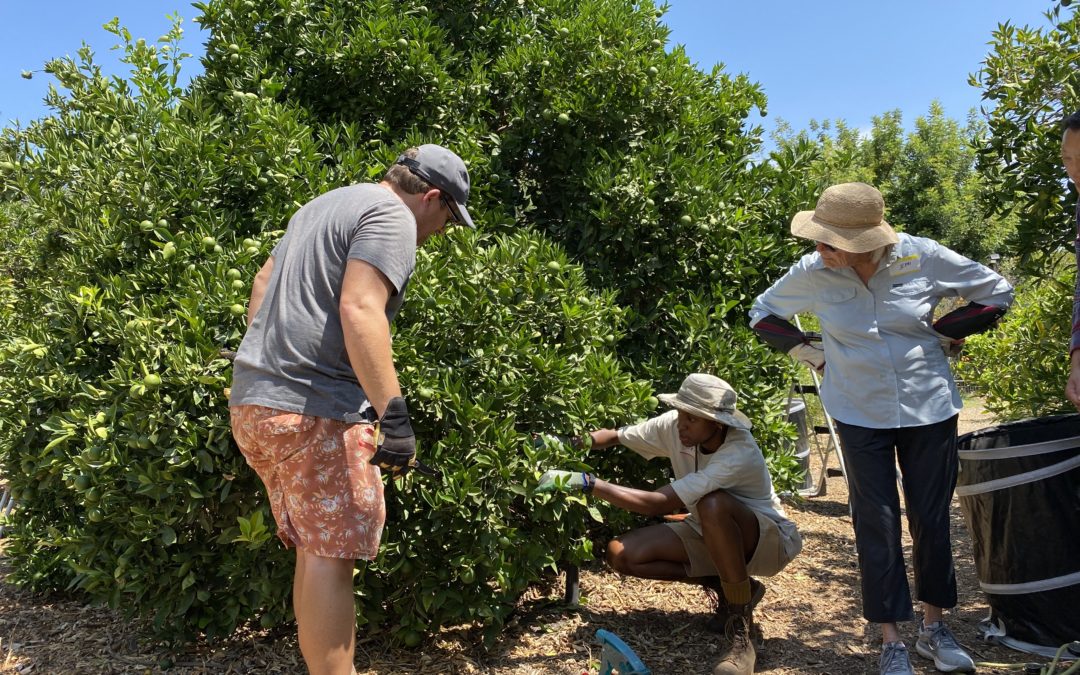
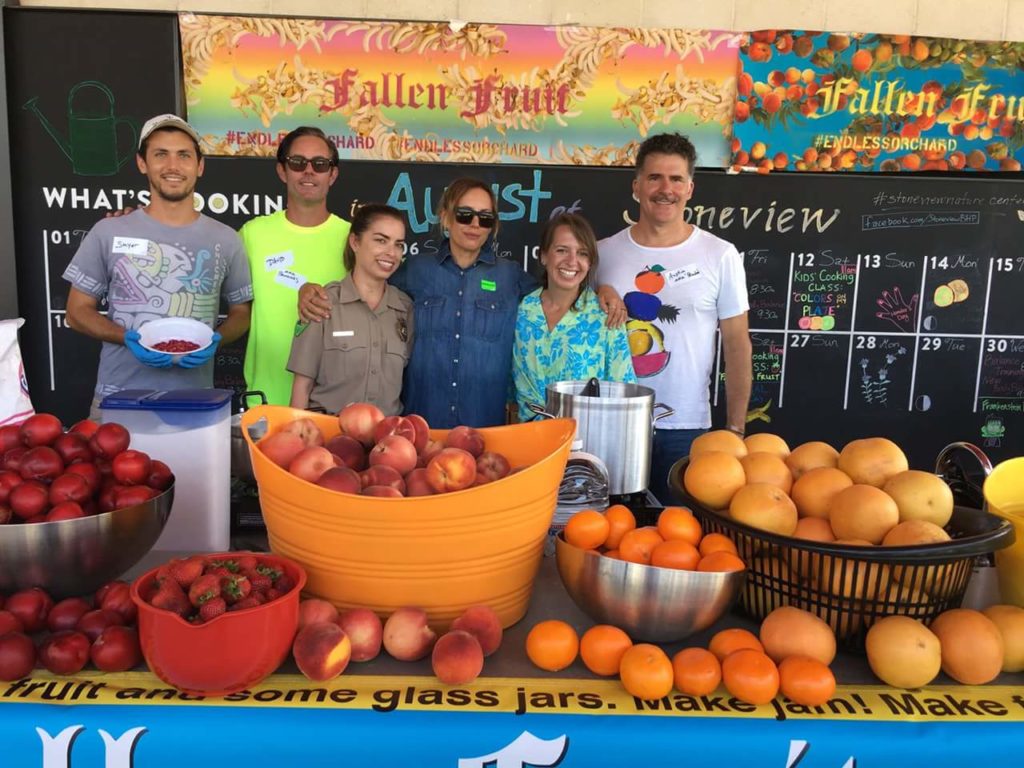
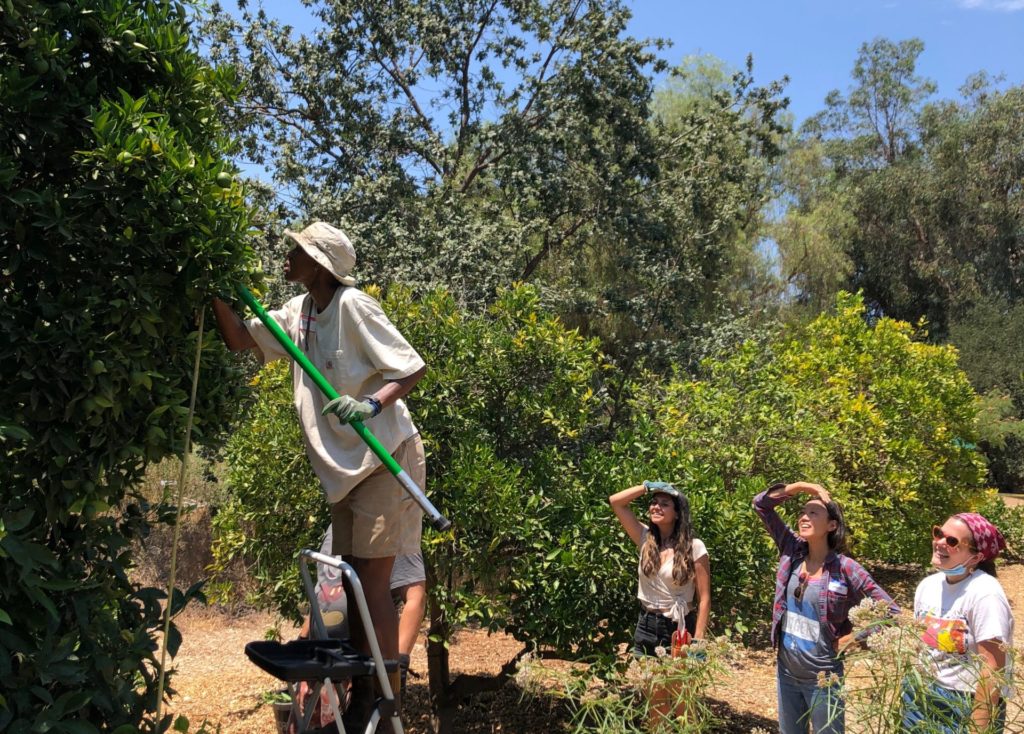

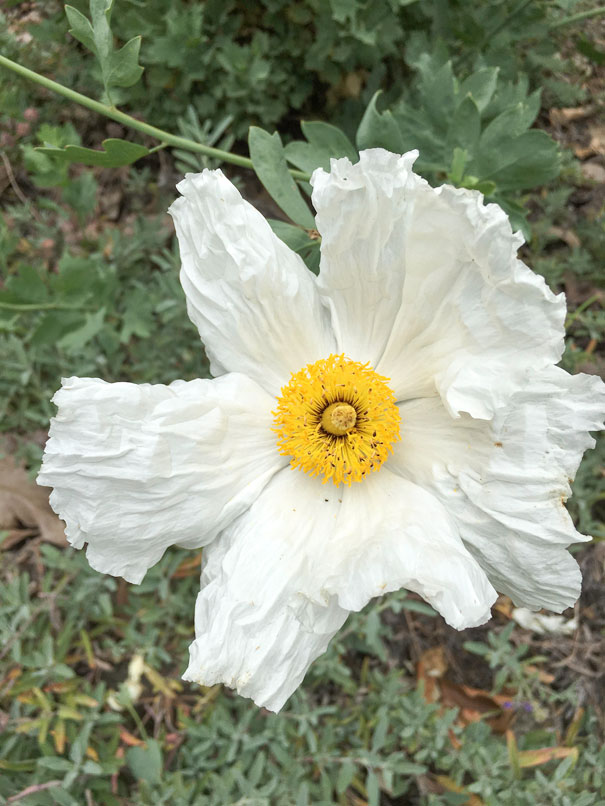
Recent Comments